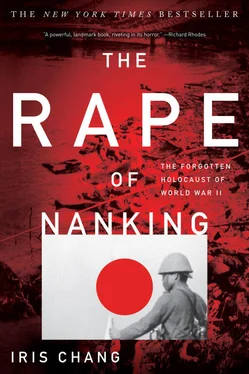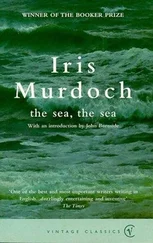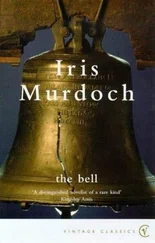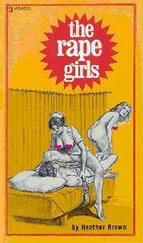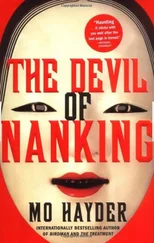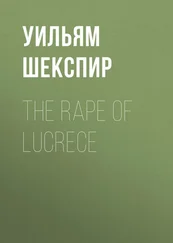107. Interestingly enough, the Panay would later be bombed: “Sinking of the U.S.S. Panay, ” ch. 11 of Some Phases of the Sino-Japanese Conflict (July–December 1937), compiled from the records of the Commander in Chief, Asiatic Fleet, by Captain W. A. Angwin (MC), USN, December 1938, Shanghai, Office of the Chief of Naval Operations, Division of Naval Intelligence, general correspondence, 1929–42, folder P9–2/EF16#23, box 284, entry 81, record group 38, National Archives; “The Panay Incident,” Records of the Office of the Chief of Naval Operations, Records of the Deputy Chief of Naval Operations, 1882–1954, Intelligence Division—Naval Attaché Reports, 1886–1939, box 438, entry 98, record group 38, National Archives; “The Bombing of the U.S.S. Panay, ” drawn by Mr. E. Larsen after consultation with Mr. Norman Alley, December 31, 1937, box 438, entry 98, record group 38, National Archives; Weldon James, “Terror Hours on Panay Told by Passenger,” Chicago Daily News, December 13, 1937; A. T. Steele, “Chinese War Horror Pictured by Reporter: Panay Victims Under Japanese Fire for Full Half Hour; Butchery and Looting Reign in Nanking,” Chicago Daily News, December 17, 1937; Bergamini, pp. 24–28.
108. “We were not rich”: Marjorie Wilson, telephone interview with the author.
108. “Would they kill us?”: Alice Tisdale Hobart, Within the Walls of Nanking (New York: Macmillan, 1928), pp. 207–8.
108. “We were more prepared for excesses from the fleeing Chinese”: “Deutsche Botschaft China,” German diplomatic reports, document dated January 15, 1938, starting on page 214, National History Archives, Republic of China.
109. The son of a sea captain: Details of John Rabe’s early life come from correspondence between the author and Rabe’s granddaughter, Ursula Reinhardt, and from the archives of the Siemens Company, Berlin Germany.
109. “I believe not only in the correctness of our political system”: Rabe’s account of the Rape of Nanking can be found in his report to Adolf Hitler, entitled “Enemy Planes over Nanking,” copies of which are now at Yale Divinity School Library, the Memorial Hall of the Victims of the Nanking Massacre by Japanese Invaders, and the Budesarchiv of the Federal Republic of Germany. Information and quotes in this section not otherwise attributed come from this report.
112. “the mayor of Nanking.” Letter from John Rabe of the International Committee for Nanking Safety Zone to the Imperial Japanese Embassy, December 27, 1937, enclosure to report entitled “Conditions in Nanking,” January 25, 1938, Intelligence Division, Naval Attaché Reports, 1886–1939, Records of the Office of the Deputy Chief of Naval Operations, 1882–1954, Office of Naval Intelligence, box 996, entry 98, record group 38, National Archives.
113. lost an eye: Fitch, My Eighty Years in China , p. 101.
113. only a fraction of the total food: Hsu, p. 56.
116. Han Chung Road: Hsu, p. 2.
116. mingled with civilians: Letter from John Rabe to Fukuda Tokuyasa, December 15, 1937, box 996, entry 98, record group 38, National Archives.
116. “We knew that there were a number of ex-soldiers”: George Fitch, diary entry for December 14, 1937, reprinted in My Eighty Years in China, p. 106. One of the original copies can be found in Commanding Officer C. F. Jeffs to the Commander in Chief, U.S. Asiatic Fleet (letterhead marked the U.S.S. Oahu ), February 14, 1938, intelligence summary filed for the week ending February 13, 1938, Office of the Chief of Naval Operations, Division of Naval Intelligence, general correspondence, 1929–42, p. 5, folder A8–21/FS#3, box 195, entry 81, record group 38, National Archives. In the diary, Fitch wrote: “Not a whimper came from the entire throng. Our own hearts were lead…. How foolish I had been to tell them the Japanese would spare their lives !”
118. “All 27 Westerners in the city”: Letter from John Rabe to the Imperial Japanese Embassy, December 17, 1937, enclosure no. 8 to report entitled “Conditions in Nanking,” January 25, 1938, box 996, entry 98, record group 38, National Archives. This letter can also be found in Hsu Shuhsi, ed., Documents of the Nanking Safety Zone: Prepared under the Auspices of the Council of International Affairs, Chungking (Shanghai, Hong Kong, Singapore: Kelly & Walsh, 1939).
118. “We did not find a single Japanese patrol”: Rabe to Imperial Japanese Embassy, December 17, 1937; Hsu Shuhsi, Documents of the Nanking Safety Zone, p. 12.
118. “Yesterday, in broad daylight”: Rabe to Imperial Japanese Embassy, December 17, 1937; Hsu Shuhsi, Documents of the Nanking Safety Zone, p. 20.
118. “If this process of terrorism continues”: Rabe to Imperial Japanese Embassy, December 17, 1937; Shuhsi Hsu, Documents of the Nanking Safety Zone, p. 17.
118. During the great Rape some Japanese embassy officials: IMTFE judgment, National Archives. See “Verdict of the International /Military Tribunal for the Far East on the Rape of Nanking,” Journal of Studies of Japanese Agression Against China , November 1990, p. 75.
118. “if you tell the newspaper reporters anything bad”: Fu Kuishan’s warning to Rabe, recorded in John Rabe diary, February 10, 1938, p. 723.
119. Once there, he would chase Japanese soldiers away: Robert Wilson, letter to family, January 31, 1938, p. 61.
120. failed to take the matter seriously: Even the Japanese embassy staff seemed secretly gleeful of the excesses of the Japanese army. When Hsu Chuang-ying caught a Japanese soldier raping a woman in a bath house and informed Fukuda, vice-consul of the Japanese embassy, of the situation, he saw that Fukuda had “a little smile on his face.” Transcript of the International Military Tribunal of the Far East. Testimony of Hsu Chuang-ying, witness. RG 311, Entry 319, page 2570-2571. Records from the Allied Operational/Occupation Headquarters, National Archives, Washington, D.C.
120. “when any of them objects [Rabe] thrusts his Nazi armband”: Copy of George Fitch diary, enclosed in file from Assistant Naval Attaché E. G. Hagen to Chief of Naval Operations (Director of Naval Intelligence), Navy Department, Washington, D.C., March 7, 1938, Office of the Chief of Naval Operations, Division of Naval Intelligence, general correspondence, 1929–42, folder P9–2/EF16#8, box 277, entry 81, record group 38; also reprinted in Fitch, My Eighty Years in China, p. 114.
121. Once, when four Japanese soldiers in the midst of raping and looting: “Cases of Disorder by Japanese Soldiers in the Safety Zone,” filed January 4, 1938, in Hsu Shuhsi, Documents of the Nanking Safety Zone, p. 65.
121. “bad business to shoot a German subject”: “Cases of Disorder by Japanese Soldiers in the Safety Zone,” subenclosure to enclosure no. 1–c, Intelligence Division, Naval Attaché Reports, 1886–1939, Records of the Office of the Deputy Chief of Naval Operations, 1882–1954, Office of Naval Intelligence, folder H–8–B Register#1727A, box 996, entry 98, record group 38, National Archives.
121. During one of his visits to the zone: Minnie Vautrin, diary 1937–40, February 17, 1938, p. 198.
121. “almost wear a Nazi badge”: Fitch, “Nanking Outrages,” January 10, 1938, Fitch Collection.
121. “He is well up in Nazi circles”: Robert Wilson, letter to family, Christmas Eve 1937, p. 6.
122. Born in 1904: Early biographical information on Robert Wilson comes from Marjorie Wilson (his widow), telephone interviews with the author.
Читать дальше
